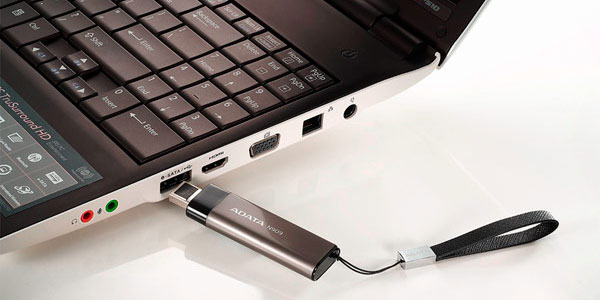
Most of the USB flash drive users see them just as devices only good for storing or sharing digital data, but not much else. USB sticks are not simply expandable, because with a little creativity and knowledge, these little gigabytes file carriers, have a lot more potential.
Among their many uses, while browsing over the internet, we’ve found a lot of interesting tips and tricks in how use the USB flash drives. So, we’ve made a small compilation of the most painfully creative ways to put you USB sticks to work.
Tandem, hard drive missile keys
Essentially, this is about creating a stripe set between two USB flash drives, creating a mini RAID 0. RAID 0 employs this data striping where your files are in fact split into pieces and written on multiple drives. This way, the data on your USB sticks is accessible only if both of your drives are mounted. Give one of these flash drives to your best friend and you can use them in tandem, like missile keys.
Usually, RIAD 0 is all about performance. For example, if you have four hard drives, the massive throughput is generated by the fact that, instead of using one drive, your system will write and access all four drives in parallel. Is like going on a four lanes highway, instead of using just a one lane country road.
The only downside with this setup is if one of your hard drives fails, you lose everything, every bit of information, as your files would be incomplete. And the same thing will happen with the USB flash drives used in a RAID 0 setup.
The Dead Drop
The Dead Drop was a project started by Aram Bartholl, who wanted to create an anonymous and offline file sharing network in public spaces. To be more specific, the project, which is now scattered all around NYC, consists of USB flash drives buried in walls, with their ends sticking out. All you need to do to access it is to connect your laptop or your other device. Ok, this is not very convenient and your laptop could end up with scratches, but it’s fun. You’d have to be dead inside not to be curious about what’s there.
Lock and unlock your computer
We’ve talk about this little application in a previous article, but it’s worth mentioning it again.
Predator is a free application that locks or unlocks your computer using a physical device like the USB flash drive. It simply turns your USB stick into an access control device, a key for the host desktop computer or laptop.
When you leave the host computer alone, just unplug the USB flash drive and the PC will be locked. When you return, plug in your USB key and you have full access again. You may not even have to use a password when you plug it in.
If you find the Predator interesting, you can find more info about this great application in the article mentioned above.
RAM boost
If you have a slow hard drive, use the ReadyBoost. This is a Vista and above Windows feature, which helps caching data over your USB flash drive. Basically, it allows you to access your data quicker.
To see if your USB stick is ReadyBoost compatible, according to Microsoft, you just have to let Windows test it. Windows Vista and above automatically test your removable storage device when attached.
But, as today most computers hold at least 4 GB of RAM, ReadyBoost won’t make too much of a difference. Of course, if your system has 2 GB of RAM or less, this could be the thin line between functionality and frustration.
